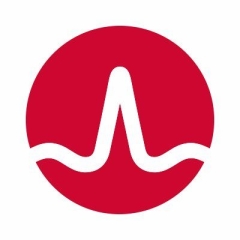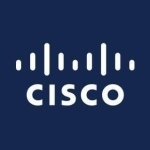What is our primary use case?
Our primary use case is for network operations. We use it for customer information, as well as for information for our operations team. We are a service provider and we give our customers access to the Performance Center interface because it gives them information about the health of their network in different locations.
For example, for a large customer with, say, 100 locations, each of the customer's employees can see the network health in his area. That means that they provide them, for example, the WAN bandwidth and DNS requests and network-related metrics.
How has it helped my organization?
The first-line operators, who are sitting in front of the monitoring consoles can easily see if a problem is related to a customer location or to the complete customer network. It's very easy to see because you have the top-20 views of metrics. It can highlight where the problem is. It's very easy for them to see.
Also, the capability where not only the traditional SNMP information is captured but also the netflow data; who is consuming the data on the WAN, and voice-related information, is helpful. The voice quality makes it very easy for first- and second-line operators to see where the issue is, and who is impacted.
What is most valuable?
For us, the multi-tenancy is very important, of course.
The scalability is also important because we have customers in the system with only a small number of devices, say, 50, but we also have customers with more than 10,000 devices. The scalability is very good, amazing.
There have been a lot of changes which were very good in the last few years of development. One of them is that they brought together Spectrum and the performance data, since Performance Management 3.6. They also have the alarm information in Performance Center which is very helpful to have in one tool.
What needs improvement?
Every product has room for improvement. It could be a little easier to integrate new metrics.
For how long have I used the solution?
More than five years.
What do I think about the stability of the solution?
In the beginning, there were some issues with the Vertica database they were using. There were some issues with stability and memory leaks, more related to memory leaks, but this was fixed in the past. At the moment, it's all very stable.
How are customer service and technical support?
Especially for the issue with the Vertica database, we contacted the support, of course, and it was okay, it was good. It was not negative. The response is typically very good, especially in this area. Of course, because it was the database behind the issue - it's an HPE database -
it took a little time until it was fixed. But that had nothing to do with the support guys.
Which solution did I use previously and why did I switch?
Before this solution, CA didn't have an equivalent solution and we used open-source solutions. But the capabilities weren't there in the open-source solutions. With this solution, we reduced about 15 performance management to only five machines. The open-source tools were not able to deliver this performance.
How was the initial setup?
It was quite easy. The setup was done in a couple of hours.
Not in the first version, but since, the integration with Spectrum has been quite good. It's more or less fully automated, which means that we get new devices into the network monitoring. It's also synched into the Performance Center. Similarly, if there are new routers sending natural data, it's automatically be coming in, which means that it reduces our administration costs.
With the capabilities of the open API and the web service interface, we're able to automate some other things. For example, we have one customer, with more than 1,000 devices, and there are a lot of changes in infrastructure every day. We automate the menus and the groupings of the devices. We can automate that via RESTful web services. That capability is quite good so in this case, it's all more or less automated.
The deployment, for new customers, takes less than a day. Typically, the products are not the problem. Usually the problems exist in the network by itself: They don't have access to the devices or the like. In the case that the infrastructure is ready, so that you can run your setup, it's quite easy. After a couple of hours, you see the first data.
My colleague does the deployment. Just one person does it.
What's my experience with pricing, setup cost, and licensing?
I like the licensing model because it's device-based. It makes it easier for us, as a managed service provider, to bill our customers. We are paid per device and the license per device makes it easy for us.
What other advice do I have?
You have to think about what you want to capture. You can capture a lot of things, but you have to make sure you capture only the things you need. We have had situations where a customer has said, "We need this, this, and this," - hundreds of parameters. But that would mean their infrastructure needs are growing massively. You have to think about the metrics you really want to capture. You can capture everything, but it doesn't make sense because then you pay a lot for hardware.
For our customer with 10,000 devices, there are more than 700 registered users. That doesn't mean 700 users at the same time, but we see 700 registered users using the tool regularly. On the other systems, there are around 200 users, including networking guys, first-line guys, second-line guys, etc.
The maintenance for Performance Management is quite easy. You have to do one to two releases a year. Testing it on a test environment takes one to two days. And then we'd need about five to ten days a year for maintenance.
We aren't using it as extensively as we could. It could be used more. It's a process to bring it to customers and show them the improvements, especially in the last versions.
I would rate the solution a nine out of ten. It could be a little bit easier in the administration or in the creating of new metrics. The really deep-dive administration could be a little bit easier.
Disclosure: PeerSpot contacted the reviewer to collect the review and to validate authenticity. The reviewer was referred by the vendor, but the review is not subject to editing or approval by the vendor. The reviewer's company has a business relationship with this vendor other than being a customer: Platinum Partner.







